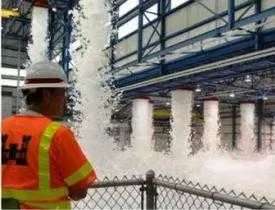Description
Course Name: Post Graduate Diploma in Industrial Safety
Course Id: PGDIS/Q0001.
Education Qualification: Graduate.
Duration: 370 Hrs.
How You will Get Diploma Certificate:
Step 1- Select your Course for Certification.
Step 2- Click on Enroll Now.
Step 3- Proceed to Enroll Now.
Step 4- Fill Your Billing Details and Proceed to Pay.
Step 5- You Will be Redirected to Payment Gateway, Pay Course and Exam Fee by Following Options.
Card(Debit/Credit), Wallet, Paytm, Net banking, UPI and Google pay.
Step 6- After Payment You will receive Study Material on your email id.
Step 7- After Completion of Course Study give Online Examination.
Step 8- After Online Examination you will get Diploma Certificate soft copy(Scan Copy) and Hard Copy(Original With Seal and Sign).
Step 9- After Certification you will receive Prospect Job Opportunities as per your Interest Area.
Online Examination Detail:
- Duration- 120 minutes.
- No. of Questions- 60. (Multiple Choice Questions).
- 10 Questions from each module, each carry 10 marks.
- Maximum Marks- 600, Passing Marks- 40%.
- There is no negative marking in this module.
| How Students will be Graded: | ||
| S.No. | Marks | Grade |
| 1 | 91-100 | O (Outstanding) |
| 2 | 81-90 | A (Excellent) |
| 3 | 71-80 | A (Very Good) |
| 4 | 61-70 | B (Good) |
| 5 | 51-60 | C (Average) |
| 6 | 41-50 | P (Pass) |
| 7 | 0-40 | F (Fail) |
Benefits of Certification:
- Government Authorized Assessment Agency Certification.
- Certificate Valid for Lifetime.
- Lifetime Verification of Certificate.
- Free Job Assistance as per your Interest Area.
Syllabus
Post Graduate Diploma in Industrial Safety
Safety, Health and Environmental Management
Occupation, Safety and Management; Occupational Safety, Health and Environmental Safety, Management – Principles & practices, Role of Management in Industrial Safety, Organization Behaviaraion Human factors contributing to accident. Planning for Safety: Planning: Definition, purpose, nature, scope and procedure, Education, Training and Employee Participation in Safety: Element of training cycle, Assessment of needs, Techniques of training, design and development of training programs, Management Information System: Sources of information on Safety, Health and Environment Protection, Compilation and collation of information, Analysis & use of modern methods of programming, storing and retrieval of MIS for Safety, Health and Environment. QCC HS Computer Software Application and Limitations, Concept for training, safety as a on-line function, Employee Participation: Purpose, areas of participation, methods, Role of trade union in Safety, Health and Environment Protection, Management by objectives and its role in Safety, Health and Management (SHE).
Safety Engineering
General safety rules, principles, maintenance, Inspections of turning machines, boring machines, milling machine, planning machine and grinding machines, CNC machines, Wood working machinery, types, safety principles, electrical guards, work area, material handling, inspection, standards and codes- saws, types, hazards, Guarding during maintenance, Zero Mechanical State (ZMS), Definition, Policy for ZMS – guarding of hazards – point of operation protective devices, machine guarding, types, fixed guard, interlock guard, automatic guard, trip guard, electron eye, positional control guard, fixed guard fencing- guard construction- guard opening, Gas welding and oxygen cutting, resistances welding, arc welding and cutting, common hazards, personal protective equipment, training, Cold working, power presses, point of operation safe guarding, auxiliary mechanisms, feeding and cutting mechanism, Heat treatment operations, electro plating, paint shops, sand and shot blasting, safety in inspection and testing, dynamic balancing, hydro testing, valves, boiler drums and headers, pressure vessels, air leak test, steam testing, safety in radiography, personal monitoring devices, radiation hazards.
Safety Legislation
Legislative measures in industrial safety: History, Provisions under the factories Act and rules made there under with amendments, Functions of safety management, ILO Convention and Recommendations in the furtherance of safety, health and welfare, Environment Protection Legislations, Safety Management and Management Principles: Types of Management, General principles of Management, Managerial Role, Authority, Responsibility and Power, Span of Management, Delegation and decentralization of authority, Safety, Role of management in industrial safety, Safety Principles, Health safety model concept, Planning, organizing, staffing, directing, controlling, motivating safety strategies, The competent person in relation to safety legislation – duties and responsibilities, Competence Building Technique (CBT), Concept for training, application of computer, multimedia, communication, Relevance of WTO regarding safety, Health and environment.
Occupational Health and Industrial Hygiene
Common occupational diseases, Occupations involving risks of contracting these diseases, Mode of causation of the diseases and its effects, Diagnostic methods, Physical tests in occupational health assessment, Methods of prevention, Compensation for occupational diseases, Evaluation of injuries, Industrial medical services in an industrial establishment and its functions, Acute and chronic health effects of substances liable to be absorbed through skin absorption, ingestion and inhalation in the form of Dusts, Fumes, Mists, Gases and Vapors, Control of airborne contaminants by substitution, isolation, enclosure, Wet methods, Industrial Ventilation – Dilution and local exhaust systems, Housekeeping, Personal Hygiene and Maintenance, Effect of occupational exposure, Methods of assessment, Permissible standards and prevention and control measures of physical Hazards, Occupational diseases of the lungs, Occupational dermatitis, Occupational cancer, Pre-employment and periodic medical examination of workers, Non respiratory personal protective devices : Head protection, Ear protection, Face and eye protection, Hand protection.
Controlling Environment Pollution
Air and Noise Pollution Control Strategies – Methods for Particulate Control – Minimization of gaseous Emissions – Emission Reduction in Industries – Desulphurization – Nitrogen Oxide Reduction, Water Pollution Control Strategies – Domestic Wastewater: Physical Unit Operations – Chemical Unit Processes – Fundamentals of Biological Treatment – Suspended Growth Biological Treatment Processes – Attached Growth Treatment Processes – Disinfection Process – Industrial Wastewater: Concepts of Remediation Technologies – Remediation Approaches for Different Chemical Contaminants – Tertiary Treatment Technologies, Solid waste management – Solid waste generation – On-site Handling, Storage and Processing – Collection of Solid Wastes – Processing Techniques – Land Filling Operations – Hazardous Wastes Management, Marine and coastal pollution control strategies – Marine and Coastal Water Characteristics – Coastal Zone Management – Mechanics of Pollutant Transport – Physical Operations for Pollutant Removal, Bioremediation Approaches.
Fire Prevention and Protection
Introduction to Industrial Fire Protection: Fire Prevention Vs Fire Protection – Importance of Fire Safety – Major Fire Accidents in History – Fire Accidents in India – Reasons for Fire – Combustion – Heat Vs Temperature – Heat Transfer – Sources of Heat – Physics of Combustion – Fire Hazards of Materials – Hazardous Materials, Common & Special Hazards: Electricity as an Ignition Source – Hazardous Locations & National Electric Code – Safe Design of Electrical Equipment – National Testing Laboratory – Flammable Liquids & Combustible Liquids – Upper & Lower Explosive Limits – Flammable & Combustible Liquid Storage – Containers & Portable Tanks – Transfer of Flammable & Combustible Liquids – Storage Cabinets – Storage Tanks – Above Ground Tanks – Under Ground Tanks – Tanker Loading & Unloading – Hydrogen – Acetylene – Oxygen – LPG, Handling & Storage of Flammable & Combustible Liquids – Electrostatic Spray Operations – Spray Booths – Ventilation – Liquid Piping Systems – Hot Work.






